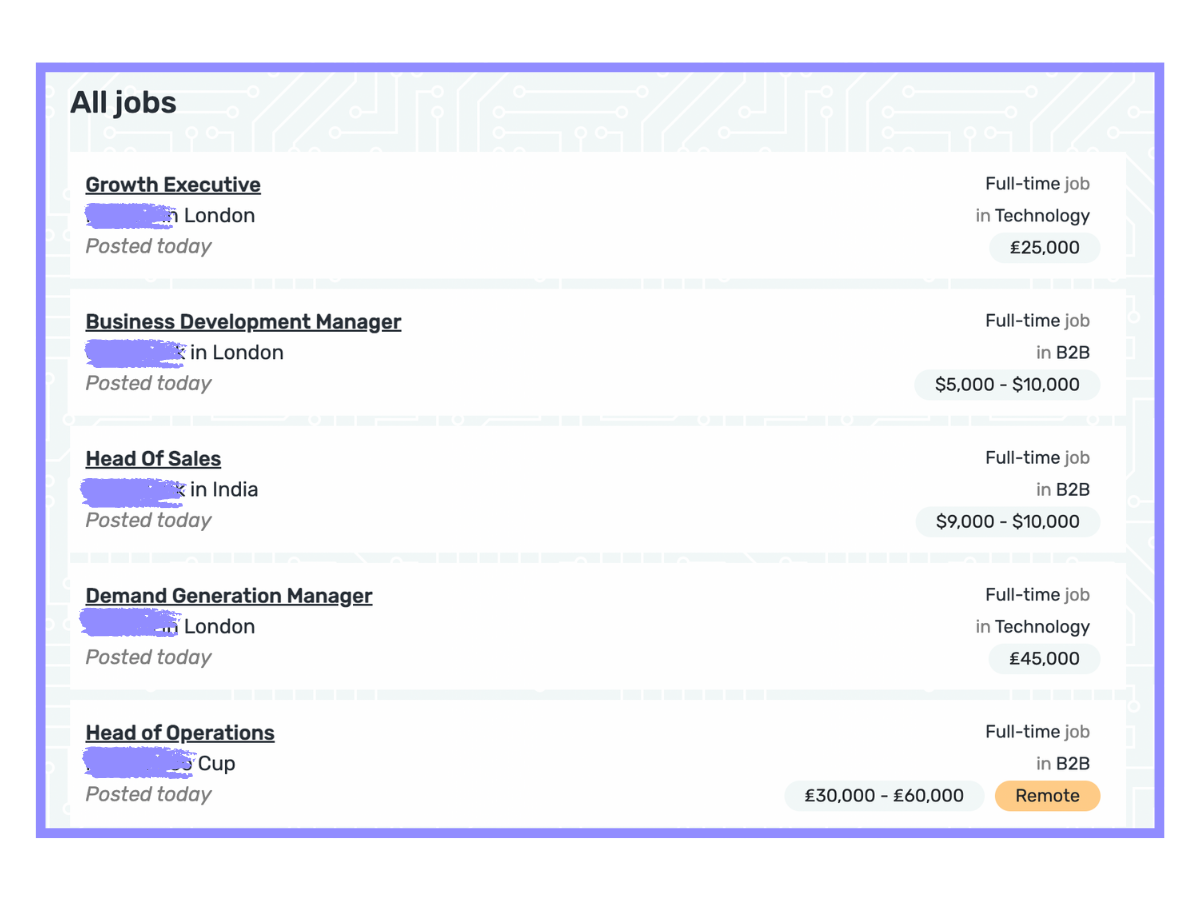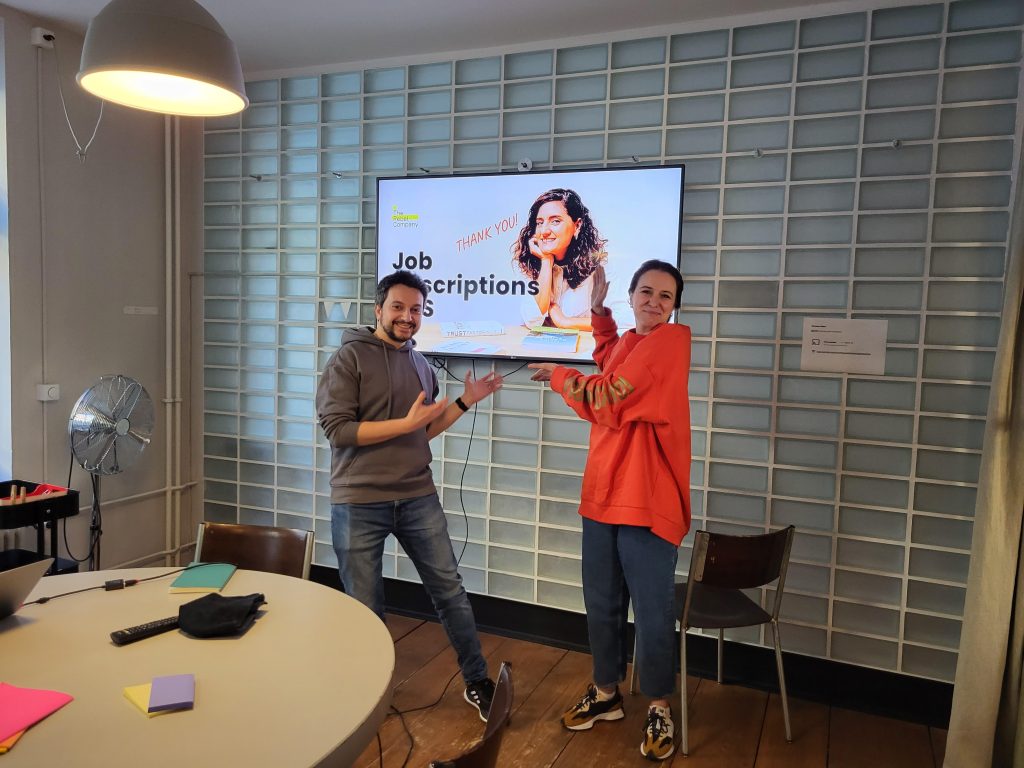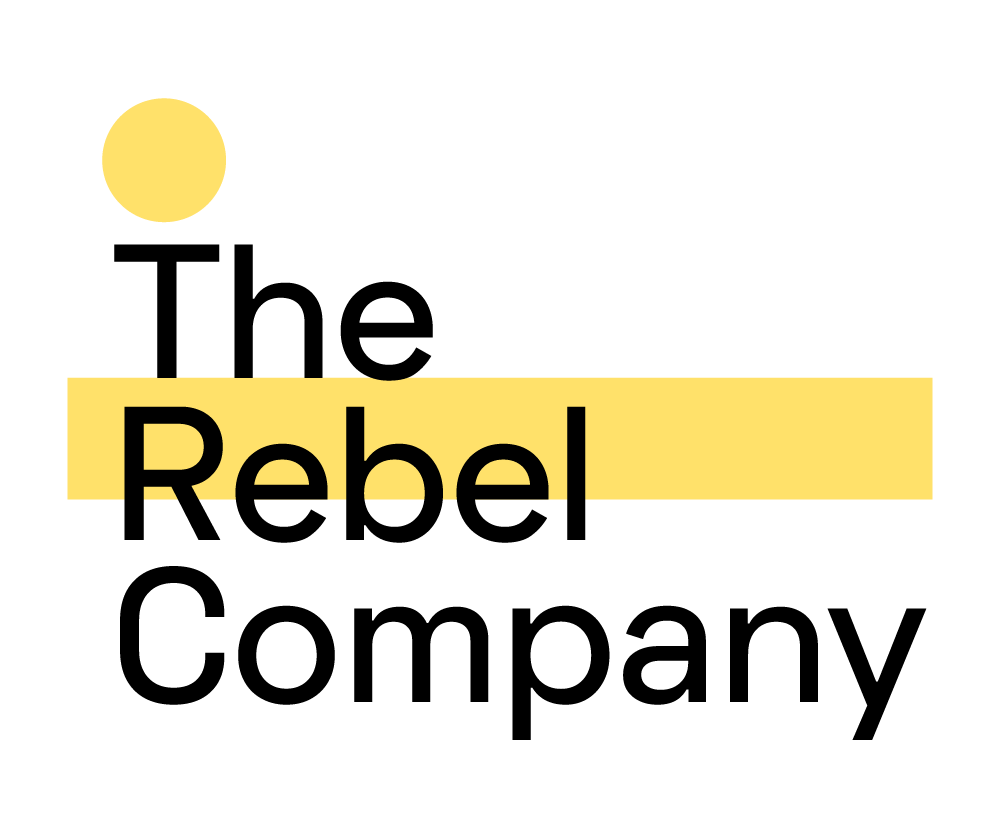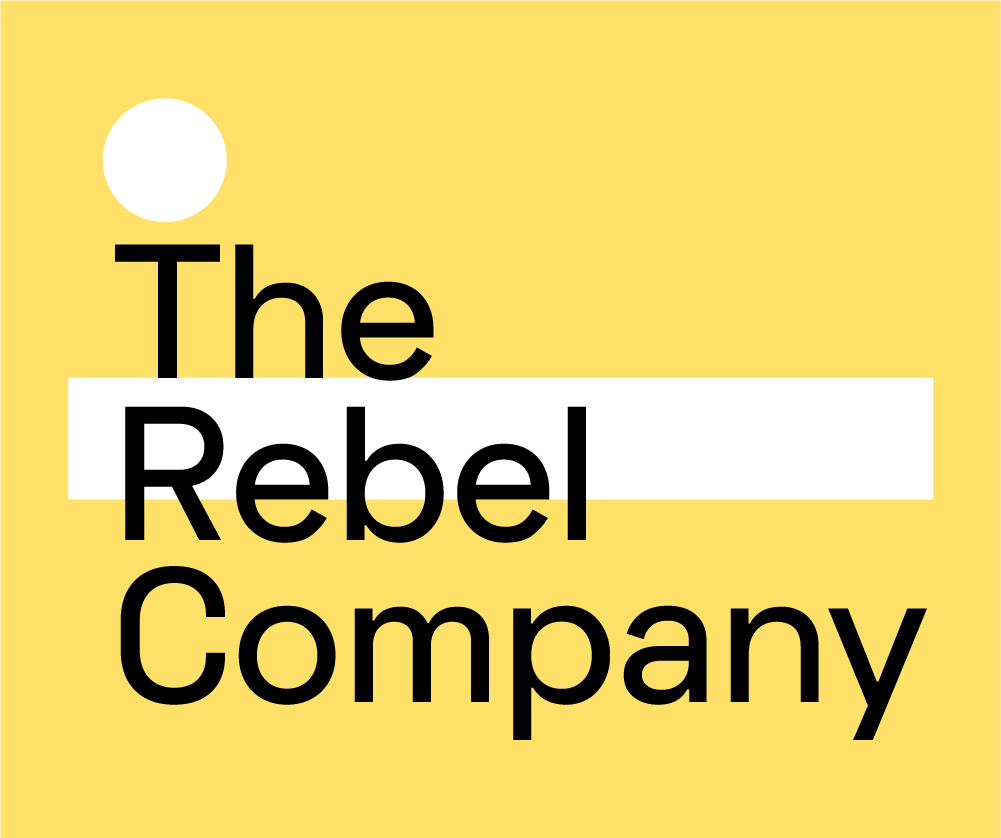
Compensation is about striking the right balance between desire vs affordability
Compensation and benefits is always a tricky subject. Regardless whether you are an early stage business or a more mature company, there might be different reasons that hold you from having open conversations about salary and compensation in general.
For example, bootstrapping can make you highly dependent on the risk to burn cash, driving your decisions on the basis of financial anxiety as opposed to clarity and focus.

Cultural resistance might also come into play. In fact, some countries are more open about the subject, while others tend to avoid the subject at all costs. If you take the UK vs Italy, for example, you’ll notice job postings take a very different approach when it comes to compensation disclosure.

Whatever the cause, lack of information regarding compensation and benefits not only discourages candidates from applying, it also creates branding damage to your business, according to this Business Insider article:
“In the wake of #metoo and Black Lives Matter, employers are under tremendous pressure from employees and shareholders to demonstrate a commitment to pay equity. A new wave of union drives, from digital media outlets to Amazon warehouses, are championing the kind of pay transparency that is a standard component of most collective bargaining agreements.”
So what is the right trade off between financial savviness, cultural openness and market opportunity?

During our last Job Descriptions SOS, we delved into the subject of compensation and benefits, in the attempt to design better job descriptions. Here’s our takeaways from this interactive session:
1. Compensation is about striking a healthy balance between desire vs affordability
2. Give to get is a winning #perks strategy
3. Work-life flexibility works everywhere – use it
4. Missing information on #totalcomp frustrates readers
Let’s dig deeper into these aspects.
———–
1. Compensation is about striking a balance between desire vs affordability
In order to be competitive, you don’t have to pay big tech-level-salaries. There must be something else that differentiates your competitive advantage from a big company, and it does not have to be money. Starts by understanding what candidates are looking for, what are they looking for in terms of culture, impact, inclusion? You might find your company has a lot more to offer than you think. If you need some inspiration, this article by HBR suggest 7 compensation strategies that you can look into to interest candidates with non-financial elements, such as:
(1) Offer bonuses for meeting clearly articulated goals.
(2) Cover expenses like parking, metro passes, gym memberships, and hardware before taxes.
(3) Cushion or reduce your risk with a signing bonus or quarterly retention bonuses.
(4) Pitch a prospective hire on the training and professional development opportunities they’ll have to grow and advance in their career at your company.
(5) If possible, offer stock options.
(6) Generous vacation and leave policies, flex time, remote days, and half-day Fridays in the summer can be attractive perks.
(7) Consider a job title a form of compensation and offer a title that’s a step up from the employee’s last gig.
As a small business, there might be other things that can help you stay attractive in the eyes of the candidate. Find what makes your company unique and make sure to mention it in your job description.
2. Give to get is a winning perks strategy
Perks are an excellent incentive to motivate your employees. It’s easy to think of them as a very expensive strategy for employees retention. What if you used perks as an investment instead? During our discussion, we found that give to get is a winning #perks strategy, providing positive incentives for your employees while benefiting of the outcomes as well. Here’s an example: give free park to get less frustrated, more punctual employees. This HBR article provides additional insights on the benefits of natural, low budget perks
“in a recent poll of 1,614 North American employees, access to natural light and views of the outdoors was the number one attribute of the workplace environment outranking stalwarts like onsite cafeterias, fitness centers, and premium perks including on-site childcare. There are wellness and productivity implications, too: academic research has found that workers with natural daylight in their office environments reported a 51% drop in the incidence of eyestrain, a 63% drop in the incidence of headaches and a 56% reduction in drowsiness.”
Looking for more inspiration? Check out these links:
3. Work-life flexibility works everywhere
The global pandemic has notoriously produced higher attention towards work-life balance expectations, with increased focus on remote work and flexible hours. Not only is the effort highly effective in terms of recruitment, it also has incredibly positive implications in terms of DEI strategies:
“With employees spending less time in the physical office, “code switching” — changing one’s behavior, appearance, or speech to fit into the dominant culture — is now less of a job requirement. People can simply do their work, without that extra emotional labor. Given this, it’s easy to see why 81% of U.S. Black knowledge workers say that they prefer a hybrid blend of in-office and remote work going forward.” HBR
Flexible scheduling can tremendously help single working mothers and more generally provide more flexibility in the family daycare routine. It is still nonetheless very hard to achieve, affecting the most fragile in the first place:
“Even when flexibility is offered, employees frequently don’t ask for it, fearing they’ll be penalized. They’re not wrong. The sociologist Lisa Dodson found that when low-wage mothers tried to negotiate for flexibility, employers tagged them as unreliable and irresponsible. HBR
Although flexible work is great on paper, we must remember it is the result of a continuous effort. Lacking this type of attention might cause a double standard type of treatment as opposed to more effective actions towards Diversity Equity and Inclusion:
“Even when companies wisely continue to allow for flexible work, those who opt out of the office at the greatest rates (including women and working parents as well of people of color) may be the most harmed by “proximity bias,” or preferential treatment shown to people who work physically together. Without careful consideration to counter this effect, remote employees could miss out on networking opportunities, stretch assignments, promotions, and career advancement.” HBR
If you don’t have to be a giant corp providing expensive perks to accommodate DEI needs. Being aware of them, listening to current and future employees requests, and taking small steps towards this direction can already help you stand out in the eyes of the candidates with a truthful, inclusive proposition.
Looking for ways to make your business more flexible with remote working? Here’s some ideas for you by Deel.
4. Missing information on Total Comp frustrates readers
The section on #totalcomp is incredibly important but also very rare to find in Job Descriptions. According to this article, employers prefer to hide this information from the public domain in order to avoid candidate poaching.
Nonetheless, salary transparency remains among the most important details that will determine whether candidates will apply for the job, according to a recent LinkedIn survey.
Salary transparency hence remains an element that provides a competitive advantage as it shows a culture of fairness, equity and inclusion. For this reason, both the US but and the European Parliament approved regulations to enforce salary disclosure before the end of the interview process for any employer:
“No more double standards, no more excuses. It is high-time both women and men are empowered to claim their right. Equal work of men and women deserves equal pay and transparency is key to make sure this becomes a reality. Today we are taking another step away from discrimination and one more step closer to equality.”
Věra Jourová, Vice-President for Values and Transparency – 15/12/2022
IN SUM
At this point, you get the idea that compensation is much more than just a salary number. It provides elements of fairness and, as a consequence, competitiveness. There are ways in which you can adjust to design the perfect compensation strategy for your organisation, without compromising on authenticity and candidate quality. Only at that point, you’ll be able to rebel against invisibility and shine in the eyes of your talent.
PS: Need help with your compensation strategy? Tell us your story at hello@therebelcompany.co




